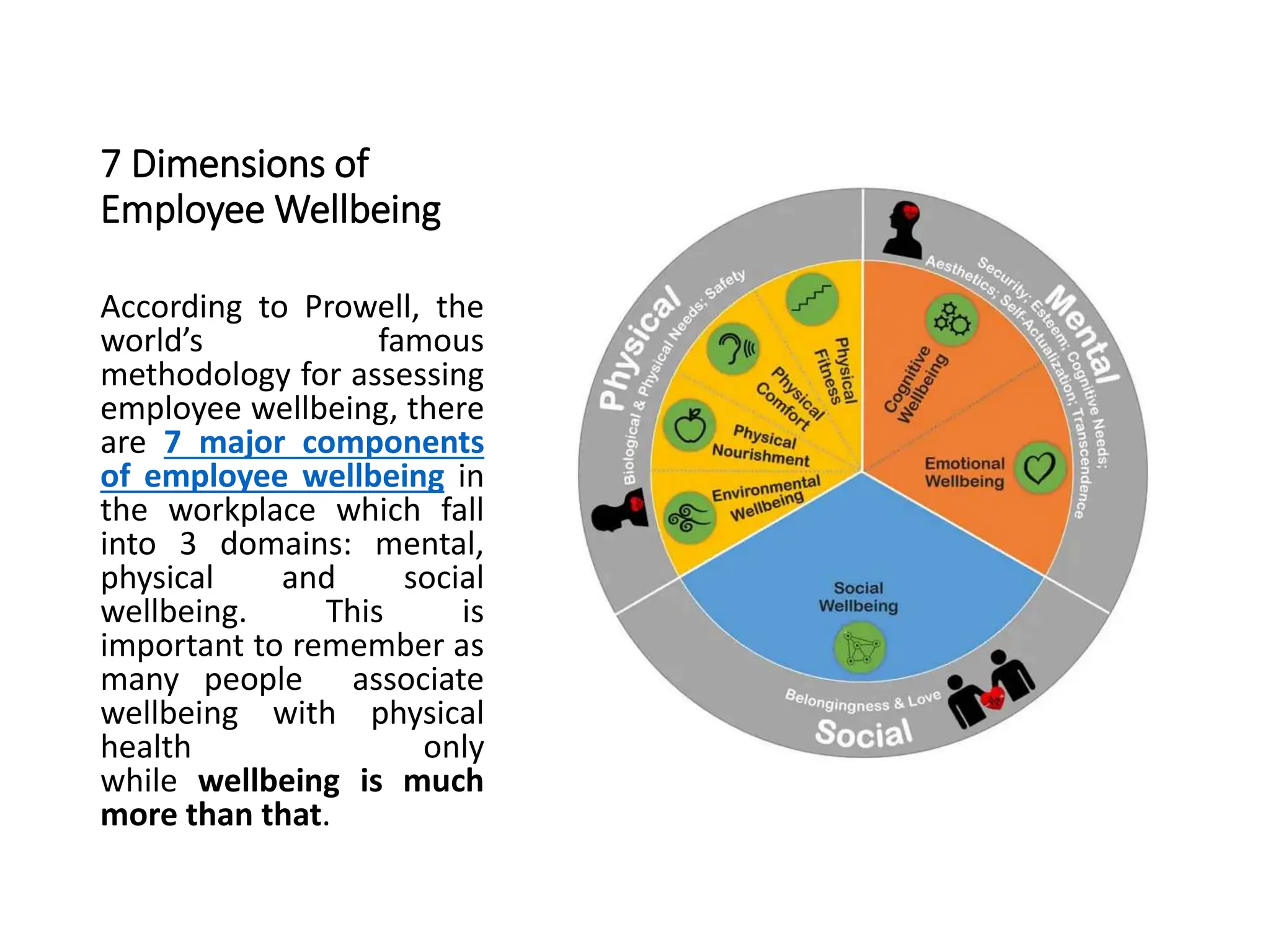Employee wellbeing encompasses the mental, physical, emotional, and economic health of employees, influenced by workplace conditions and external factors. Organizations are increasingly recognizing the importance of promoting employee wellbeing to enhance productivity, engagement, and retention while reducing absenteeism and presenteeism. Implementing effective wellbeing strategies can lead to significant benefits for both employees and employers, including improved morale and stronger company culture.












